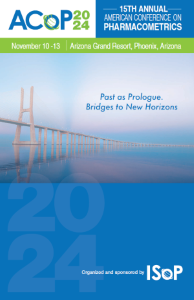Quantitative Systems Pharmacology in Late Stage Oncology Drug Development– New Horizons to Dose Optimization
Model-based Dose Selection for Epcoritamab, a subcutaneous CD3xCD20 bispecific antibody
Monday, November 11, 2024
11:30 AM – 12:00 PM MST
Location: Canyon Ballroom
- TL
Tommy Li, PhD
Director
Genmab
Edison, New Jersey, United StatesDisclosure(s): Genmab: Employment (Ongoing)
Speaker(s)
Disclosure(s):
Tommy Li, PhD: Genmab: Employment (Ongoing)
Epcoritamab is a subcutaneously administered CD3xCD20 bispecific antibody (bsAb) that induces T-cell–mediated cytotoxicity against CD20-positive B cells. Epcoritamab has been approved for the treatment of adults with different types of relapsed or refractory (R/R) large B cell lymphoma (LBCL) after ≥2 lines of systemic therapy in various geographies, including the US, Europe, and Japan. Target engagement and crosslinking of CD3 and CD20 (trimer formation) leads to activation and expansion of T cells and killing of malignant B cells. The unique properties and mechanisms of action of bsAbs require novel modeling methods to predict clinical activity and inform RP2D selection. For epcoritamab RP2D selection, a fit-for-purpose, semi-mechanistic, physiologically based PK/PD model was leveraged to quantitatively describe biodistribution, trimer formation, and tumor response, informed by preclinical, clinical PK, biomarker, tumor, and response data. Clinical trial simulations were performed to predict trimer formation and tumor response, which were used to identify optimal RP2D. The selected RP2D was tested and confirmed, leveraging exposure-response modeling approach using clinical data from the expansion cohort in Study GCT3013-01. Further development of this model is ongoing, which will be presented in this talk. The case study of epcoritamab dose selection showcase the application and utility of fit-for-purpose QSP model in the era of Project Optimus.

